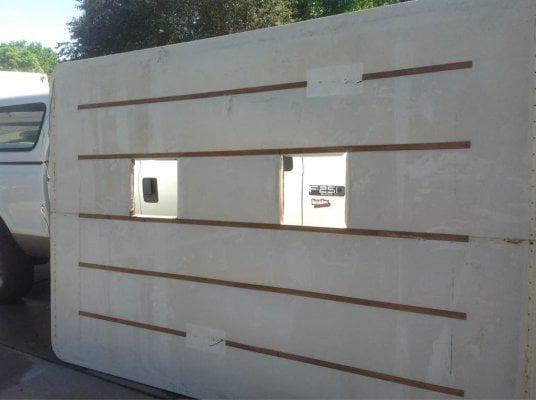PokyBro
Senior Member
Hey wuck,wuck said:Pokey-
I tried to get a couple of measurements for you, but access to that upper panel is difficult with an assembled camper!
I measured the bottom (triangular) piece to start - I got a bit of variance and noticed the rivets don't all line up, they wander up and down a bit. So an "eyeball average" (you measured 11-7/8") seems to be about 12", +/- 1/8" or so.
For the upper panel, I measured from the upper rivets on the panel to the rivets attached to the lower panel (middle hinge), getting about 12-1/2". From that number, we can subtract out the center to center distance of the hinge, 7/8", arriving at 11-5/8" center to center for the upper panel itself (you measured 11-1/2"), close enough?
Hope this makes some sense to you, but they do appear to be slightly different to answer your question.
Thanks for taking the time to measure the panels on your camper, realizing you had to go open it up, I really appreciate it bud! You're right about trying to explain how you take measurements, it's like what do you call this and that. Makes me chuckle at myself.
So, it appears the distance between rivets on the bottom, triangular panel are slightly greater by 1/2" - 5/8", than that of the top panel, based on yours and my panel measurements.
When you think of how long ago my factory panel was made, compared to present, it's an obvious situation of "if it ain't broken, don't fix it". I'm just guessing, but the slightly greater difference on the bottom panel, may have something to do with how pressure on the bottom panel opens the lift panels with ease, as they do, slightly over dead center like a fulcrum. Not sure.
If anyone else would care to measure their panels as described above, it might help confirm these measurements with even more surety. I haven't gotten an answer back from an email I sent to the factory yet.
Sent from my iPad using Wander The West













































